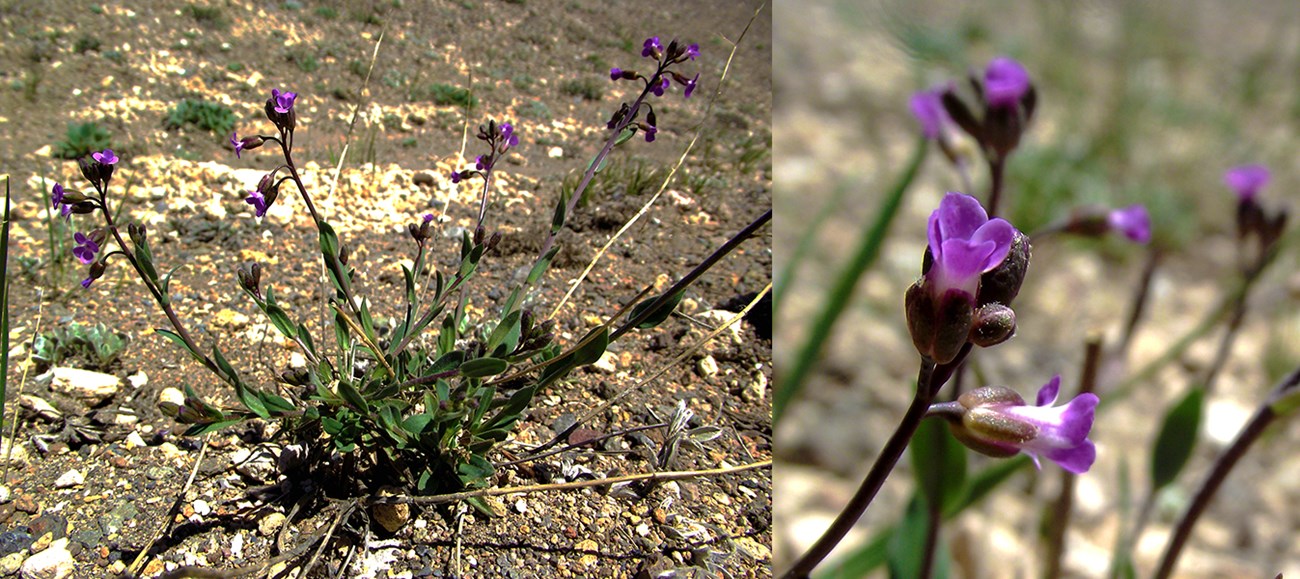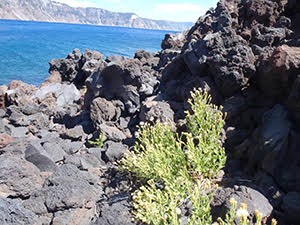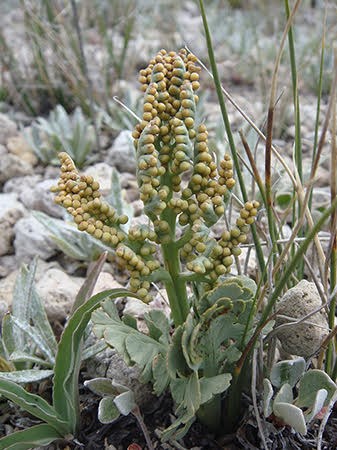
NPS Photo 
Plants in DangerThe pumice grapefern Botrychium pumicola (bottom photo) is a plant that is listed as threatened by the state of Oregon. At Crater Lake National Park, it has a handful of populations that are found around the caldera rim.Crater Lake rockcress Boechera horizontalis (photos above) is a candidate for listing as threatened or endangered by the state of Oregon, and is also being considered as a candidate for listing as threatened or endangered under the federal Endangered Species Act. It grows around the caldera rim and on Mt. Scott. Whitebark pine Pinus albicaulis is a candidate species for listing under the federal Endangered Species Act. It occupies the park’s highest elevations, but can be found as low as 6,500’ in elevation. Other rare plants grow in wetlands, along talus slopes—Mt. Shasta Arnica Arnica viscosa,—and in meadow habitats—Mt. Mazama Collomia Collomia mazama. 
NPS Photo Llao Rock Research Natural AreaTo protect habitat for the pumice grapefern, the Crater Lake rockcress, and whitebark pine, the Llao Rock Research Natural Area (RNA) is seasonally closed to the public whenever there is less than one foot of continuous snow cover. The Llao Rock RNA supports the park’s largest populations of both the pumice grapefern and the Crater Lake rockcress, and contains some of the Park’s most rust-resistant whitebark pine trees. Heavy visitor use and creation of social trails in the Llao Rock RNA threatened sensitive plant habitat, necessitating the seasonal closure of this area.Click on Whitebark pine to learn why these subalpine trees have been declining within the park for decades. |
Last updated: June 23, 2019
